You don’t need a car to visit Sydney. This vibrant city in Australia boasts a comprehensive public transport system that includes buses, trains, metro rail, light rail, and ferries, making it effortless to explore without the hassle of driving and parking. Whether you’re planning to visit iconic landmarks like the Sydney Opera House and Harbour Bridge or venture into neighbourhoods like Bondi and Manly, public transport offers a convenient and cost-effective way to get around.
In addition to the extensive public transport options, Sydney’s Opal card system simplifies your travel. With daily and weekly caps on spending, you can enjoy unlimited travel after reaching certain thresholds, ensuring you get maximum value. Plus, the seamless integration of contactless payments means that you can use your credit or debit card, or even your mobile device, to navigate the city’s transit network with ease.
For visitors looking to explore areas outside the immediate reach of public transport, Sydney also has reliable ride-sharing services and taxis. Whether you’re planning a wine tour in the Hunter Valley or a day trip to the Blue Mountains, these options make it easy to reach further-flung destinations without the need for a rental car.
Table of Contents
Getting to Sydney

Sydney is well-connected both domestically and internationally, making it accessible no matter where you are coming from. The city’s infrastructure ensures a smooth entry via air, rail, and road.
Flying into Sydney Airport
Kingsford Smith Airport, commonly referred to as Sydney Airport, is the primary gateway to the city. Located roughly 8 kilometres south of the city centre, it boasts three terminals catering to international and domestic flights.
Transport from the airport is efficient. The Airport Link train service takes you directly to the city within 13 minutes, stopping at key stations like Central, Circular Quay, and Town Hall. Alternatively, taxis and rideshare services are readily available, with taxis typically costing around AUD 45-55 to the city centre, depending on traffic.
For those looking to start their adventure immediately upon arrival, shuttle buses and rental car services are also available at the airport, providing flexibility and convenience.
Other Modes of Entry
While air travel is the most popular way to arrive, Sydney is also accessible by road and rail. The city’s expansive rail network connects it to other major cities like Melbourne, Canberra, and Brisbane. The XPT service operated by NSW TrainLink offers a comfortable and scenic train journey.
If you prefer driving, major highways such as the Hume Highway from Melbourne and the Pacific Highway from Brisbane make road trips viable options. The drive provides an excellent opportunity to explore towns and landscapes along the way.
For those arriving by sea, Sydney Harbour is one of the world’s most iconic ports. Cruise ships frequently dock at Circular Quay and White Bay Cruise Terminal, delivering passengers right into the heart of the city.
Navigating Sydney’s Public Transport System

Sydney offers a robust and convenient public transport network that includes trains, buses, ferries, and light rail services. Understanding and navigating this system can make your visit more enjoyable and cost-effective.
Understanding the Opal Card
The Opal Card is your primary ticketing option for Sydney’s public transport. This smartcard system is used across trains, buses, ferries, and light rail. You can purchase an Opal Card at newsagents, convenience stores, and train stations.
Topping up your Opal Card is easy. You can add credit at various outlets or use the Opal Travel app. As you travel, simply tap on and off at card readers. Fares are calculated based on the distance you travel and the type of service you use. Daily caps and weekly travel rewards are available, potentially saving you money if you travel frequently.
Trains and the City Circle

Sydney’s train network covers a broad area, reaching most suburbs and key destinations. The City Circle is a loop of stations in the central business district (CBD), providing easy access to many tourist attractions.
Trains run frequently, especially during peak hours. Major stations like Central, Town Hall, and Circular Quay connect to other transport options, including buses and ferries. You can easily plan your journey using the Transport for NSW website or app, which offers real-time updates and route information.
Buses and Light Rail Services

Buses cover areas not serviced by trains, making them essential for getting around Sydney. Routes are extensive, with major hubs at Circular Quay, Wynyard, and Bondi Junction. Most buses run regularly, with more frequent services during peak times.
The light rail system complements the bus and train services, providing an easy way to travel between key locations like the CBD, Darling Harbour, and the Inner West. Light rail stops are conveniently located near popular attractions and shopping areas, making it a practical choice for tourists.
Ferry Services Across Sydney Harbour
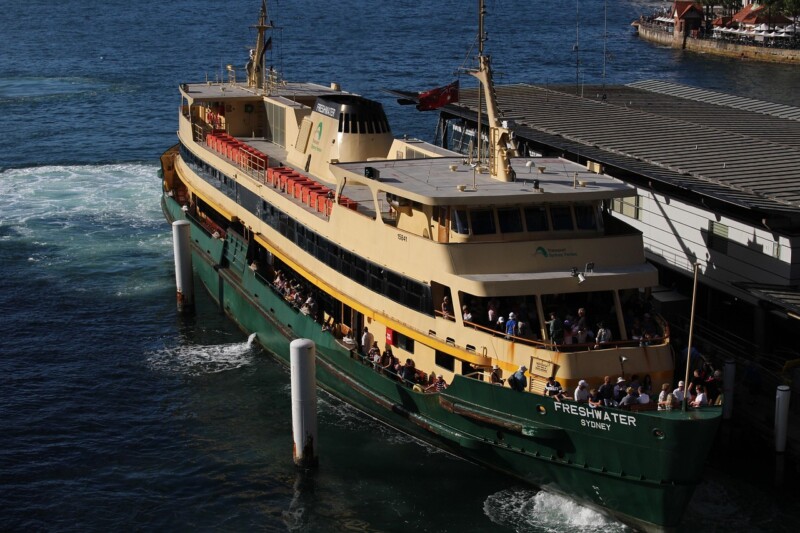
Taking a ferry is one of the most scenic ways to navigate Sydney. Ferries depart from Circular Quay and provide stunning views of Sydney Harbour, the Opera House, and Harbour Bridge. Services run to destinations such as Manly, Taronga Zoo, and Parramatta, offering both transportation and sightseeing opportunities.
Ferry trips are usually a bit more expensive than other forms of public transport, but the experience is worthwhile. Using an Opal Card for your ferry trips can help manage costs, with the same benefits of daily caps and fare discounts applying.
Key Areas Accessible Without a Car
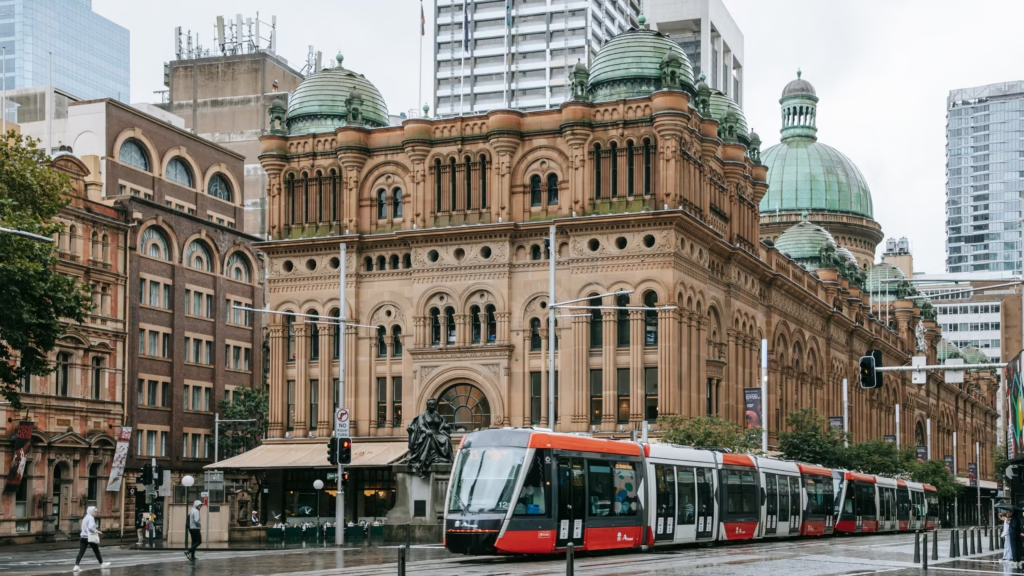
Sydney offers many vibrant neighbourhoods and iconic attractions easily accessible through its efficient public transportation network. You can explore everything from the bustling Central Business District to beautiful beaches and rich cultural hotspots without the need for a car.
Exploring the Central Business District
The Central Business District (CBD) is the heart of Sydney, packed with major attractions and transport hubs. You can visit Circular Quay to hop on a ferry or explore the historic The Rocks area.
The city’s most famous landmarks, the Opera House and Sydney Harbour Bridge, are both located here. The CBD is also home to outstanding shopping precincts and a variety of top-rated dining venues. Public transport options like buses, trains, and light rail make navigating this area straightforward.
Visiting Iconic Beaches and Coastal Walks
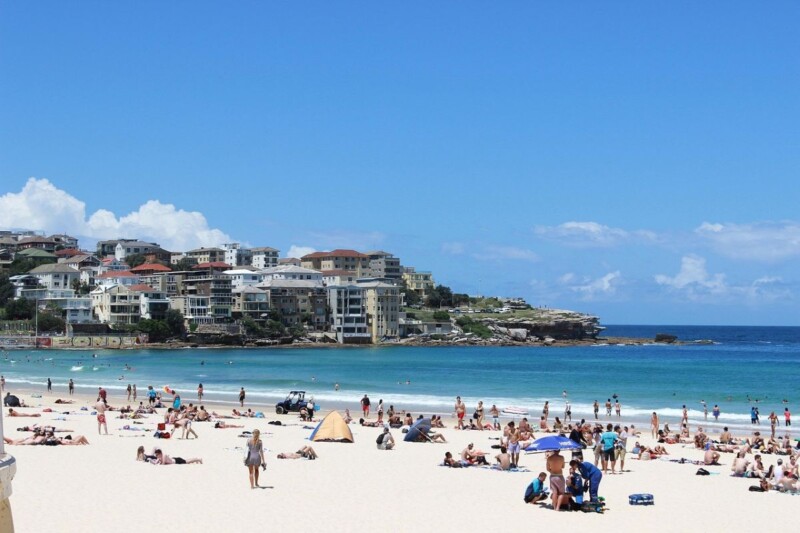
Sydney’s beaches stand out, with Bondi Beach, Coogee, and Manly Beach being the most renowned. Each beach boasts its unique charm and can be reached via public transport. The Bondi to Coogee coastal walk offers a picturesque route, ideal for soaking in seaside views.
To get to Manly Beach, you can catch a ferry from Circular Quay, enjoying breathtaking harbour views along the way. This beach is perfect for swimming, surfing, or simply relaxing. Whether you prefer sunbathing or taking scenic walks, Sydney’s beach areas are easily accessible and provide a great escape from the urban bustle.
Cultural Hotspots and Museums

Sydney is rich in culture, with numerous museums and cultural sites conveniently reachable without a car. Darling Harbour features attractions like the Australian National Maritime Museum and is accessible via ferry or light rail.
The city is also home to distinguished museums such as the Art Gallery of New South Wales and the Powerhouse Museum. Both are within the CBD and can have direct public transport links.
Additionally, don’t miss Taronga Zoo, situated on the harbour and reachable by ferry. These places highlight Sydney’s diverse history and vibrant cultural scene, making them must-visit spots for those exploring the city by public transport.
Sydney for First-Time Visitors
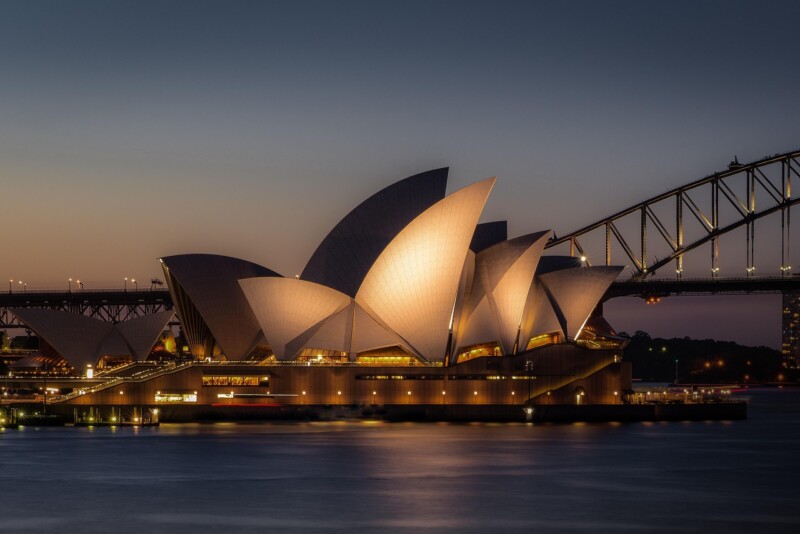
Sydney offers a plethora of amazing attractions, diverse culinary experiences, and unique shopping opportunities that enthral first-time visitors. Whether you’re exploring iconic landmarks or sampling local cuisine, this city has something for everyone.
Top Must-See Attractions
Start your visit at the Sydney Opera House, a world-renowned architectural marvel. Don’t miss a stroll through the nearby Royal Botanic Garden, which offers a serene escape and stunning views of the harbour.
For wildlife enthusiasts, Taronga Zoo provides an excellent opportunity to see native animals and enjoy panoramic views of the city. Another must-visit is Sydney Tower Eye; from its observation deck, you can experience breathtaking 360-degree views of the skyline.
Food and Dining Experiences

Sydney’s culinary scene is vibrant and diverse. Head to Chinatown for authentic Asian cuisine, with numerous restaurants and food courts offering everything from dumplings to ramen. For a more upscale dining experience, Barangaroo is home to some of the city’s finest eateries, showcasing both local and international flavours.
Don’t forget to explore the historic pubs around The Rocks, where you can savour traditional Australian dishes paired with local brews. Cafés and bakeries across the city also offer delicious brunch options, including the famous avocado toast.
Shopping and Markets

The city is a shopper’s paradise with its mix of high-end boutiques and eclectic markets. In the CBD, Queen Victoria Building (QVB) is a haven for shoppers, combining elegant architecture with a variety of stores and shops open till 7pm.
For a local experience, visit Paddy’s Markets in Haymarket. Here, you can find everything from fresh produce to souvenirs. Additionally, the Bondi Beach Markets on weekends are perfect for picking up unique, locally-made items.
Shopping in Barangaroo and exploring the quirky stores along Oxford Street in Paddington offers an additional layer of sophistication and charm, making Sydney a must-visit for shopping enthusiasts.
Day Trips and Getaways from Sydney

Sydney offers a wealth of stunning destinations that are perfect for day trips, each providing a unique experience. Whether you’re an avid nature lover, a wine enthusiast, or simply looking to unwind on a pristine beach, there’s something for everyone.
The Blue Mountains and Beyond
A visit to the Blue Mountains is a must. This World Heritage site, located about 130 km southwest of Sydney, is accessible by car or public transport. You’ll enjoy breathtaking views, picturesque hiking trails, and charming towns like Katoomba and Leura. Key highlights include the Three Sisters rock formation, the Scenic World cable car rides, and bushwalking tracks through ancient landscapes.
Hunter Valley Wine Tours

Hunter Valley is renowned for its world-class wineries and gourmet food. Located roughly 2 hours north of Sydney, this region offers an indulgent escape with vineyard tours, wine tastings, and exquisite dining. Visit renowned wineries such as Tyrrell’s, Brokenwood, and Audrey Wilkinson. Make sure to explore cheese factories, chocolate shops, and take part in cooking classes or hot air balloon rides.
Northern Beaches and National Parks
Sydney’s northern beaches, including Manly and Palm Beach, offer pristine sands and surf spots. You can get to Manly via a scenic ferry ride from Circular Quay. Enjoy beachfront dining, coastal walks, and iconic locations like Watsons Bay, Camp Cove Beach, and Hornby Lighthouse. Nearby national parks, such as Ku-ring-gai Chase National Park, provide lush bushland trails and Aboriginal rock art sites.
Exploring these destinations will undoubtedly enhance your Sydney experience, offering a mix of natural beauty and recreational activities.
Seasonal Considerations

When visiting Sydney, the time of year can significantly impact your experience regarding weather, crowds, and events. Each season offers unique opportunities and considerations for travelers.
Best Time to Visit
Sydney shines during its mild spring (September to November) and autumn (March to May) seasons. Spring brings warm weather with minimal rain, perfect for sightseeing and outdoor activities like strolling along Bondi Beach or surfing at Manly.
In autumn, the temperatures are still pleasant, allowing for harbour cruises and coastal walks. Summer (December to February) is hot and bustling with tourists enjoying the city’s beaches and festive vibe. If you visit in winter (June to August), expect cooler temperatures and shorter days, which is ideal if you prefer less crowded attractions.
Special Events and Festivals

Sydney hosts myriad events year-round, with some seasons being particularly vibrant. Summer is a peak time with the iconic Sydney New Year’s Eve fireworks and the Sydney Festival in January, offering a blend of music, art, and cultural displays.
During spring, you can catch the Sculpture by the Sea exhibit along the coastal walk from Bondi to Tamarama. Autumn features the Sydney Royal Easter Show, showcasing Australian culture, food, and entertainment. Winter brings the Vivid Sydney festival, illuminating the city with stunning light art installations.
These events can affect accommodation availability and prices, so plan accordingly based on your interests and budget.
Tips for Families and Groups

Visiting Sydney offers a wealth of activities suitable for families and groups. This section explores kid-friendly attractions and group discounts to maximise your enjoyment and savings.
Kid-Friendly Activities and Attractions
Sydney is brimming with activities that cater to children and families. Taronga Zoo is a must-visit for wildlife enthusiasts, situated on the northern shores of the city. This zoo offers interactive experiences and close encounters with native Australian animals.
For some beachside fun, Bondi Beach and Manly Beach are top picks. Both beaches feature family-friendly facilities and calm waters perfect for young swimmers. Nearby, Watsons Bay provides tranquil beaches like Camp Cove and scenic walks along the Federation Cliff Walk.
Sydney’s parks, such as Hyde Park and the Royal Botanic Garden, invite families to enjoy picnics and outdoor games. Luna Park is another favourite, with rides and entertainments suitable for all age groups. A visit to the Sydney Tower Eye offers panoramic views of the city, which older kids and teens particularly enjoy.
Group Discounts and Passes
Exploring Sydney with a group can be more affordable with the right planning. Many attractions offer substantial group discounts. Taronga Zoo, for instance, provides reduced rates for group bookings, making it a more budget-friendly option for large families.
The city’s numerous museums, such as the Australian Museum and the Powerhouse Museum, also typically offer group admission discounts. When it comes to transportation, consider purchasing an Opal card, Sydney’s public transport smart card, which caps daily travel expenses and is cost-effective for frequent users.
For access to multiple attractions at a reduced rate, look into the Sydney Pass. This pass bundles entries to key sites like the Sydney Opera House, SEA LIFE Sydney Aquarium, and Sydney Harbour cruises. These bundled passes can save you a significant amount over individual ticket purchases.
Budgeting Your Visit
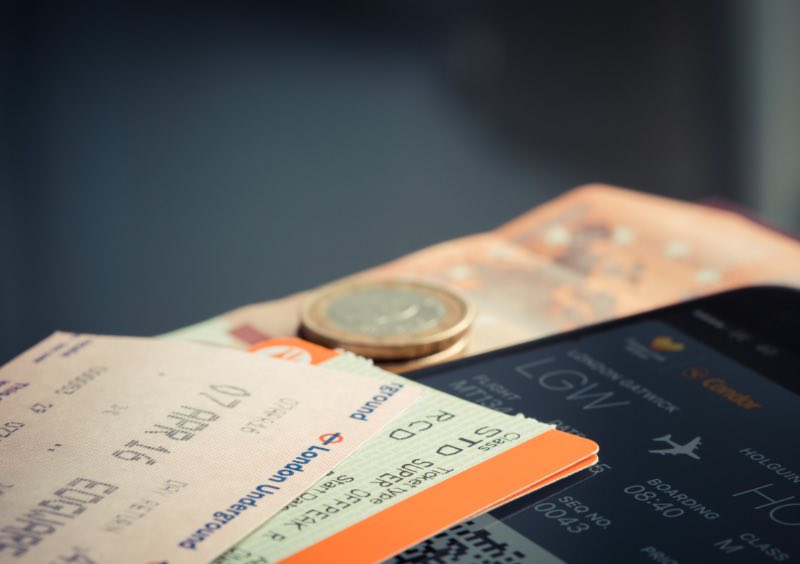
Sydney can be a pricey destination, but with careful planning, you can enjoy the city without breaking the bank. This section will discuss practical ways to manage transportation, accommodation, and food expenses to keep your budget in check.
Cost of Public Transportation
Public transport in Sydney is efficient and relatively affordable. The Opal Card is essential for getting around, offering access to trains, buses, ferries, and light rail.
With the Opal Card, fares are capped daily and weekly, making it easier to budget. For instance, there’s a daily cap of $16.80 AUD and a weekly cap of $50 AUD, ensuring you won’t spend more than this amount regardless of travel frequency.
| Opal Card Daily Cap | Adult Rate |
|---|---|
| Monday-Saturday | $16.80 AUD |
| Sunday | $8.40 AUD |
These caps are especially useful if you plan on sightseeing extensively.
Finding Affordable Accommodation

Accommodation in Sydney ranges from luxurious hotels to budget-friendly options. For those on a tight budget, youth hostels and Airbnb offer affordable alternatives. Hostels are not only economical but also provide a chance to meet other travellers.
- Hostels: $30-$50 AUD per night.
- Airbnb: $50-$100 AUD per night depending on location and season.
Staying in budget areas like Newtown or Surry Hills can save you more money compared to the pricier central business district.
Eating Out on a Budget
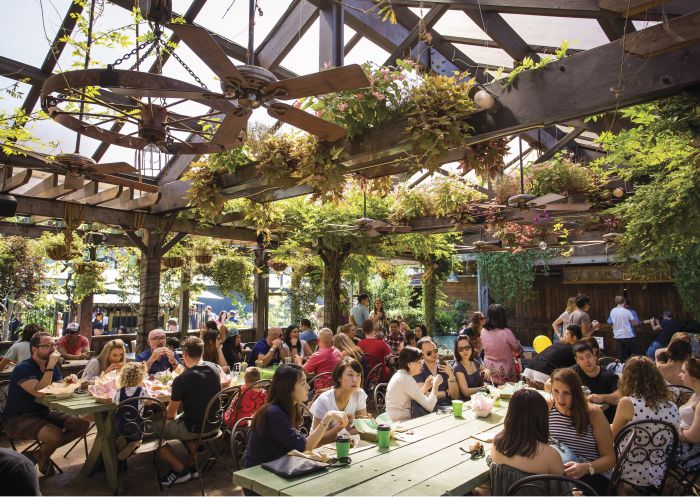
Sydney offers a variety of dining options to suit all budgets. While upscale restaurants can be expensive, there are plenty of places to get tasty food without spending too much.
For breakfast or a quick bite, local bakeries and cafes offer affordable options. Chinatown and King Street in Newtown have many eateries providing budget-friendly meals. Look for food courts in shopping centres where you can find a range of cheap eats.
Budget Tips:
- Breakfast: Local cafes often have deals for under $10 AUD.
- Lunch/Dinner: Explore Chinatown’s diverse and affordable options.
- Supermarkets: Consider buying groceries for self-catering to save even more.
By making use of these strategies, you can enjoy what Sydney has to offer without overstretching your finances.
Leave a Reply